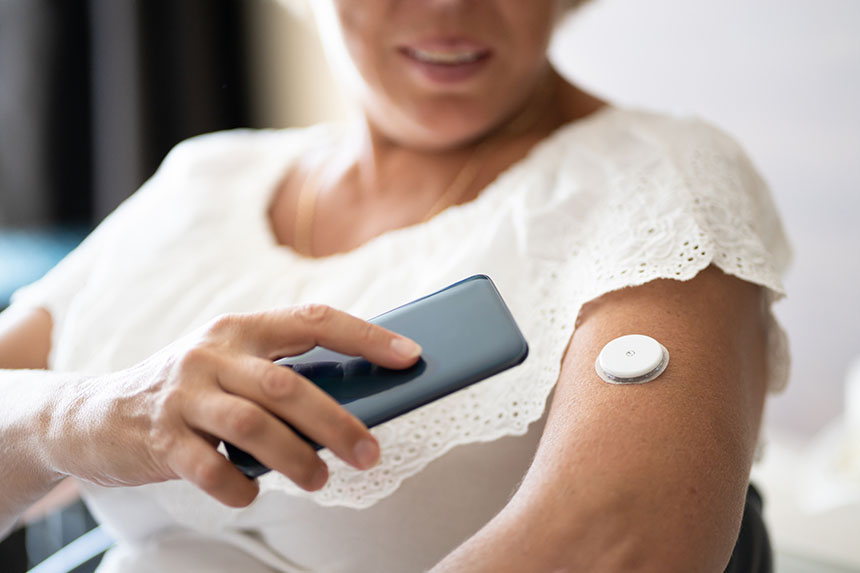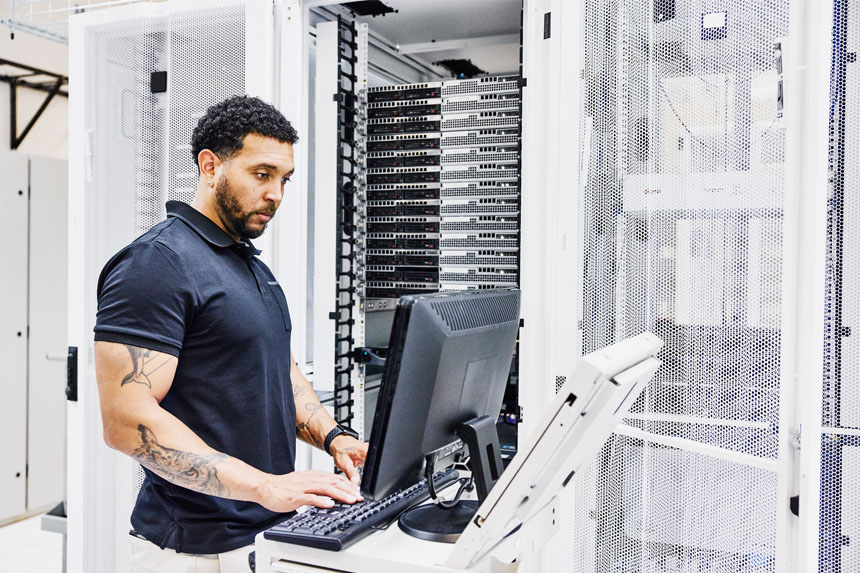Just over a decade ago, the only “smart device” in the average person’s possession was their phone. But since the release of the iPhone in 2007, advances in wireless technology have enabled all sorts of objects to connect across the internet.
The devices that comprise the internet of things (IoT) use sensors, processors and networking to collect, analyze and/or transmit data that can inform user decisions or drive automated systems. From a healthcare industry perspective, it’s not hard to see how these capabilities offer serious utility to product developers, providers and their patients alike.
You can find the internet of medical things (IoMT) everywhere from physicians’ offices to hospitals to patients’ homes. Let’s take a look at how smart devices are being used in healthcare—and the obstacles the IoMT faces going forward.
Remote monitoring and telehealth bring home wellness tracking, disease management
Without a question, telehealth is part of COVID-19’s “new normal.” While it’s not a one-size-fits-all solution, telehealth provides a safer, more convenient option for physicians to see patients for relatively minor health concerns.
Of course, it’s often harder for doctors to get all the information they need through a video call alone. Even before the pandemic, one survey found that 88% of providers had invested or were planning to invest in remote patient monitoring solutions as well.
Today, some of the most common precision health metrics and disease markers that concern physicians are now routinely monitored by everyday wearables and household devices.
Biosensors and wellness monitors are increasingly common in consumer devices, giving providers and patients new opportunities to track key metrics—like heart rate, blood oxygen, activity levels and sleep duration—and make more informed care decisions. Digital virtual assistants, smartphones and smartwatches (and yes, even smart toilets) can monitor long-term health trends and alert users to potentially concerning changes.
The IoMT also plays a role in disease management through clinical-grade medical equipment:
- Smart pacemakers can transmit device data to physicians or directly to patients via smartphone app.
- IoMT-connected inhalers can help users track the frequency and triggers of respiratory episodes, and guide physicians’ treatment plans.
- Automated insulin delivery systems can be controlled and monitored by smartphone, simplifying blood sugar management for people with diabetes.
- Ingestible smart pills enable physicians to remotely monitor patients’ digestive health and medication compliance.
Remote patient monitoring solutions like these help keep non-critical patients home, reducing hospital admissions and cutting costs for providers.
IoMT overcomes barriers in care settings
The IoMT is improving the efficiency and effectiveness of care in traditional settings, too.
Hospitals, skilled nursing facilities and other locations of care operate on incredibly narrow margins. These facilities must balance cost efficiency with quality of care and patient experience—all while remaining compliant with shifting regulations.
Smart devices and systems help administrators perform this balancing act. The IoMT can accelerate or automate routine processes and provide insight into staff, patients, equipment and the facilities themselves:
- IoMT-connected inventory and asset management systems monitor the condition of expensive equipment and simplify the ordering and use of common medical supplies and pharmaceuticals.
- Staff wearables and other IoMT management systems allow facility administrators to monitor productivity, wellness and the whereabouts of personnel.
- Smart beds and patient trackers provide real-time data on facility occupancy, patient flow and potential bottlenecks.
- Smart environmental systems—including temperature, humidity and lighting controls—enable remote or automatic optimization of conditions in specific parts of a facility, supporting patient experience and more efficient utility usage.
More data is moving faster than ever, making security a key concern
Wi-Fi helped to usher in the IoMT, but the recent development of 5G has empowered smart devices to transmit greater quantities of data more quickly and beyond the confines of localized networks. This has opened the door to broader, higher-quality data collection, unique modalities such as virtual reality therapy and even remote robotic surgery.
Additionally, 5G is less vulnerable to security breaches than 4G or Wi-Fi—for now, at least. This will come as a relief to patients, many of whom admit to withholding medical information out of privacy concerns.
The WHO estimates that 2 million different types of medical devices exist on the global market. Nearly half of the world owns a smartphone. Even as networks become safer, the growing number of connected devices—and sheer quantity of data passing through them—raise the potential for exploitation or mishandling.
Some privacy advocates have warned that IoMT technology is outpacing policymaking geared toward protecting privacy, and that patients and consumers often fail to understand the scope of existing protections. Plus, device manufacturers can be less than transparent about how they use the data their products collect.
The massive utility of this data practically ensures an ongoing fight between information privacy and useability camps as IoMT technology advances. Patients, providers, consumer tech manufacturers and life sciences companies all have a stake in the development of this exciting field.
Who’s using IoMT tech—and how?
If your company is developing the next great wearable or smart device, you need to understand who’s invested in IoMT technology and how they’re putting it to use. Healthcare commercial intelligence from our platform can help. Learn more today by starting a free trial.




